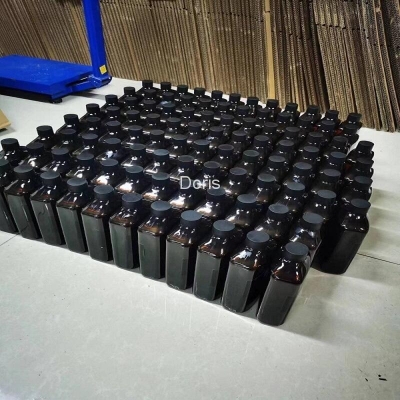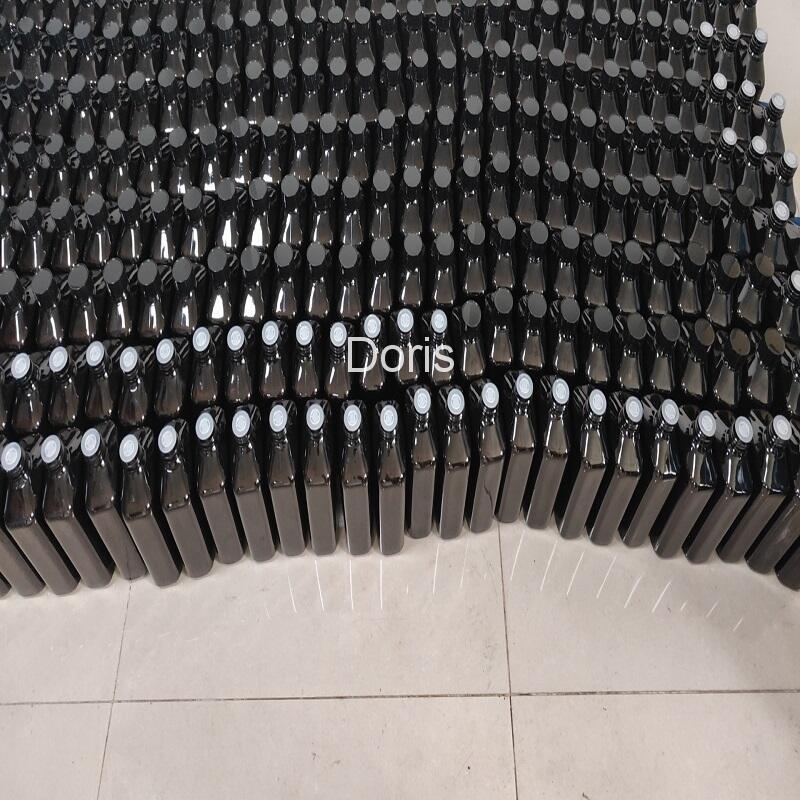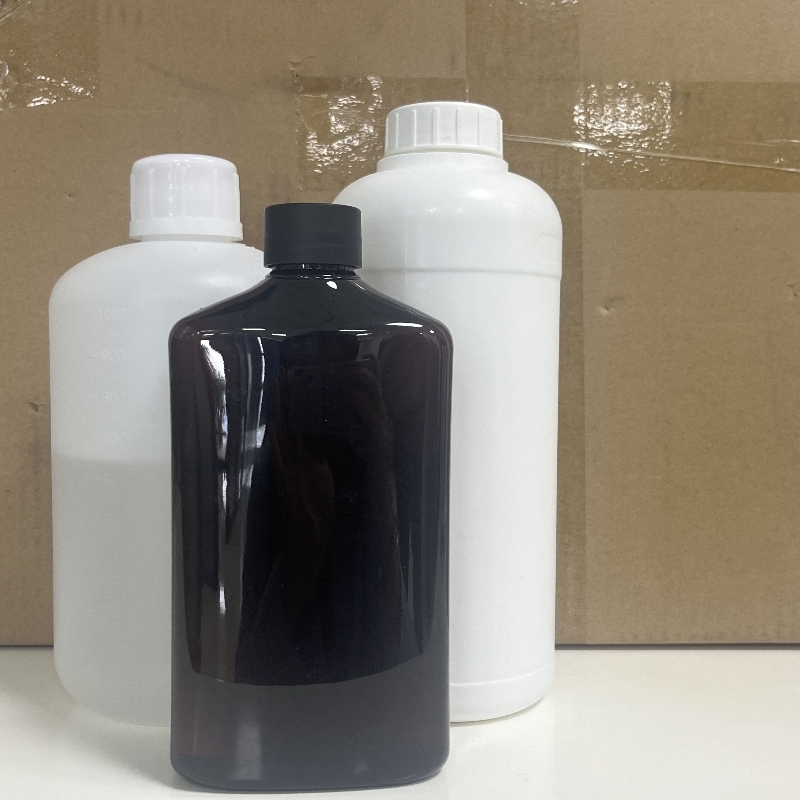-
Categories
-
Pharmaceutical Intermediates
-
Active Pharmaceutical Ingredients
-
Food Additives
- Industrial Coatings
- Agrochemicals
- Dyes and Pigments
- Surfactant
- Flavors and Fragrances
- Chemical Reagents
- Catalyst and Auxiliary
- Natural Products
- Inorganic Chemistry
-
Organic Chemistry
-
Biochemical Engineering
- Analytical Chemistry
- Cosmetic Ingredient
-
Pharmaceutical Intermediates
Promotion
ECHEMI Mall
Wholesale
Weekly Price
Exhibition
News
-
Trade Service
The old industry that used to do wedding dresses for CROs for many years has finally stepped up to the forefront of capital
In less than two years, several well-known model mouse suppliers in the industry, Nanmo Biology, Jicui Yaokang, and Biocytometer, have entered the capital market.
Complementing each other is that model animals are equally popular in the primary market.
Behind this is the blowout of market demand that can no longer be described as inflation
As the research and development of innovative drugs such as new antibody drugs, gene and cell therapy are intensively pushed to the later stage, since 2020, the unit price of large model animals such as experimental monkeys and experimental dogs has doubled several times
Let the "bullet" fly for a while
Let the "bullet" fly for a whileModel animals may seem simple, but it is not easy to provide them with quality and quantity
Model animals are genetically engineered, or induced by physico-chemistry, or spontaneously have certain diseases, genetic traits or the latter biological characteristics, and are used to analyze disease pathogenesis, discover potential disease treatment targets, or verify new drugs, The safety and effectiveness of the new treatment regimen in artificially bred animals
In addition to the animal's own breeding cycle, the limited technical level and the complexity of artificially trained animals are also the reasons why the current model animals are in short supply
On the one hand, the technical transformation of animals is a complex system engineering
If the whole process goes smoothly, it will take about 10 months.
The CRISPR technology that appeared in 2012 is regarded as the third-generation technology of model animals.
At present, CRISPR, ES cell targeting and microinjection are the most mainstream technologies at present.
On the other hand, the artificial breeding of model animals has strict quality control standards
For most model animal suppliers, the animal facility management system involves two major modules: hardware and software
In recent years, with the continuous expansion of the scale of services, domestic model animal companies have all strengthened the construction of animal facility management capabilities
In addition, there is a more important point.
It can be seen that the technology and experience threshold of the model animal industry is not low.
Therefore, even in the face of rapidly increasing market demand, most model animal companies are trying to increase production capacity, users are also trying to build their own production capacity, and the supply side construction of model animals It can't be done overnight
.
In other words, the bullet that detonated the demand of the model animal industry will fly for a while
.
Some practitioners have estimated from the arterial network that it will take at least 2 to 3 years for the production capacity of model animals to barely match the market demand.
The ancient industry along the Charles River stirs the market again
The ancient industry along the Charles River stirs the market again Modifying mammals in the laboratory to test hypotheses is something that humans began to do more than 100 years ago
.
It was the first allele homozygous mouse obtained by a professor at Harvard University in the laboratory through inbreeding
.
In the last century, with the invention and wide application of antibiotics and vaccines, cardiovascular diseases and cancers have replaced severe infectious diseases, becoming the main causes of human health and death, and have also become the focus of medical research.
Genetically modified model animals Concentrated in these hot areas to grow rapidly
.
According to statistics, more than half of the model animals are currently used in tumor immunity research, followed by metabolic diseases and neurological diseases
.
For more than a century, rodents (such as rats, mice, hamsters, etc.
), non-primates (such as rhesus monkeys), dogs, rabbits, zebrafish, etc.
have been used in basic science and clinical medicine.
, New drug research and development experiments
.
Of course, the world's most sneaky model animal is the Charles River Laboratory, which started by purchasing thousands of squirrel cages on the farm
.
The latter has already ranked among the world's top CROs by virtue of its excellent drug safety evaluation capabilities, and has also moved the idea of acquiring WuXi AppTec
.
To date, Charles River Laboratories is still the largest supplier of model animals, controlling more than 80% of the global market
.
In China, the model animal industry has come a long way from behind the scenes to the front
.
At the beginning of its development, the demand for model animals was mainly concentrated in scientific research institutes engaged in basic research.
Because the mechanism of action involved was relatively simple to verify, and the animal model construction was mainly based on simply modified mice, the fragmented and single demand caused the industry to grow slowly.
.
Therefore, at present, the largest domestic model animal company has domestic branches of overseas giants, such as Vitality under the Charles River Laboratory, and start-ups established by professors from domestic universities.
For example, Jicui Yaokang from Nanjing Founded by Professor Gao Xiang of the University's Model Animal Research Institute, and Southern Model Biology was founded by Professor Fei Jian from the Shanghai Southern Model Biology Research Center
.
Until now, they are still the main supplier of gene-edited mice or cell lines for scientific research and experimentation in China
.
However, in more time, model animals are businesses that will gradually weaken after CRO becomes bigger and stronger
.
The objective reason is that model animals are only a small module in drug research and development.
In the era when the requirements for animal models are relatively simple, some powerful pharmaceutical companies can cover this part of the demand by building their own animal houses, and the corresponding division of labor is still meticulous.
Not enough to support the journey of a complete industry
.
The subjective reason is that CROs need to grow.
With the advancement of enterprise product development and the accumulation of their own technical capabilities, they need to extend downstream to build barriers to competition
.
Around 2015, with the rise of original innovative drugs and innovative therapies and the continuous increase in the failure rate of clinical trials, the demand for more complex animal models has been derived, and the underlying logic of the model animal industry has begun to change
.
Specifically, it is necessary to use target humanized mice or immune system humanized mice to verify before clinical, especially in recent years, more immune checkpoint humanized mice and autoimmune diseases have been used in the field of tumor immunity.
Humanized mice with more cytokines are used in the field, and their usage has exploded
.
In particular, due to the increasing shortage of large experimental animals and the lack of prices, mouse models have been given more functions in drug efficacy evaluation.
More complex gene editing in mice has become a trend, resulting in a significant increase in customer unit prices.
Driven the industrial chain status of the model animal industry to a higher level
.
Almost since 2015, the domestic model animal industry that has grown savagely has experienced homogenized competition that has lasted for several years
.
As a result of this competition, the animal pricing of gene editing models based on CRISPR technology has been compressed to just over one-third of the original price.
Many companies with weaker overall strength have been eliminated, leaving a relatively concentrated market competition pattern
.
(Data source: Jicui Yaokang prospectus)
According to statistics in 2019, in the four major model animal markets of finished mice, customized mice, CRO services and mouse breeding services, several head companies accounted for a total of more than 20% of the market share
.
Among them, in the relatively new CRO service market, the leading companies such as Biocytometer, Jicui Yaokang and Nanmo Biotechnology have the most obvious advantages, occupying nearly 80% of the market in total
.
However, as a model animal is a good business with a gross profit of at least 60%, the enclosure competition among leading manufacturers is also extremely fierce
.
For head companies, the richness of mouse strains, the stability of mouse quality, and the speed of capacity expansion are the main tools for establishing barriers to competition
.
Expansion of production capacity is something almost everyone is struggling to do, but they will try to synchronize their efforts as much as possible under the limit of their strength
.
For example, Kang Kang, a collection of drugs that is well versed in the genetic code of each gene in mice, has increased the number of mouse categories on sale to more than 20,000 through the spotted mouse project, and will sequence the genetic mutations of the offspring before delivery.
To ensure the stability of the model, Jicui Yaokang quickly established branches in Changzhou and Guangzhou to meet more market demand with expanded production capacity
.
Saiye Biosciences took the lead in adopting a relatively aggressive market strategy in the industry, quickly occupying the Beijing market where Biocytometer retreated, and establishing an animal center in Gu'an, Hebei
.
Biosaito will further extend the battle line downstream, transforming into a biotechnology company engaged in the development of new antibody drugs, and making the Qianmowangfang project a success
.
After savage growth, how can old bottles be filled with new wine?
After savage growth, how can old bottles be filled with new wine? The price of the left hand is skyrocketing, and the right hand is madly enclosing the land, but the market ceiling of model mice is not high
.
According to the Nanmo Biological Prospectus, the domestic model mouse market has grown from RMB 1 billion in 2015 to RMB 3.
3 billion in 2019, with a compound annual growth rate of 34.
7%
.
With the vigorous development of life science research and new drug development, this growth trend will continue.
It is estimated that by 2024, the total market size of domestic model mice is expected to grow to 9.
8 billion yuan
.
However, the capital market's expectations for the model animal industry go far beyond this
.
According to estimates of historical equity changes disclosed in the prospectuses of various companies, Biocytometer is currently valued at 7.
8 billion yuan, Chicui Yaokang is 8 billion yuan, and Nanmo Biosciences reaches 10.
7 billion yuan
.
Therefore, more important than the capital bubble is the underlying logic of the model animal industry that has changed under the medical ecological fission and corporate strength fusion
.
For the model animal industry, based on the basic methodology of model animals, the industry boundaries that continue to extend outward are the opportunities for the future
.
This kind of industry extension can be further divided into vertical and horizontal categories
.
Longitudinal extension, i.
e.
the advantages of the traditional business model animal expand downstream CRO and drug discovery business, such as the pharmacodynamic evaluation, service vitro and in vivo pharmacology
.
In the functional drug efficacy service module of Jicui Yaokang, it has been able to provide in vivo drug efficacy tests including multiple mouse models including LAG3 humanized model, PD1 humanized model, TIGIT humanized model, GITR humanized model, etc.
, The revenue generated by this part of the business accounts for an increase in total revenue year by year, from 5% in 2018 to 12% in 2020, which is the fastest growing part of each business segment
.
In the use of IPO funds, Jicui Yaokang also made it clear that it will invest 200 million yuan to build a real-world animal model research and development and transformation platform
.
Coincidentally, Nanmo Biosystems provides phenotypic analysis more systematically, such as detecting insulin changes in a gene knockout mouse under fasting conditions to determine whether the gene is involved in insulin regulation; pharmacodynamic analysis and evaluation, such as using PD -1 Humanized mice are used to model subcutaneous tumors, and use these tumor-bearing mice to evaluate the anti-tumor efficacy of PD-1 antibody drugs; CRO services such as breeding services
.
Similar to Jicui Yaokang, the CRO business module of Nanmo Biotechnology has also generated a year-on-year increase in revenue, from 9.
56% in 2017 to 17.
57% in the first half of 2020
.
By relying on model animals to gain a firm foothold in the market, Biosaito directly began to deploy new drug research and development
.
The prospectus shows that the two new monoclonal antibody drugs YH003 and YH001 independently developed by Biocytogen have completed phase II clinical trials and preclinical studies, respectively
.
Among them, the preliminary results of the phase II clinical trial of YH003 showed good safety and efficacy characteristics, and it has the potential to become the best-in-class humanized IgG2 agonistic monoclonal antibody targeting CD40; YH001 is a pre-clinical efficacy study Performance is better than the rival Ipilimumab (Yervoy)
.
A model animal practitioner told Artery.
com that a model animal company with rich experience and complete categories has inherent technical advantages in deploying CRO business.
In the development of some original innovative drugs, animal models have become the most time-consuming and risky preclinical The largest research and development link, the construction of an excellent animal model itself is likely to mean that the preclinical research of the new drug is half successful
.
"The incremental investment in the CRO deployment of the model animal enterprise is very small, and it only needs to add personnel with a structural background in the technical team
.
" The practitioner said
.
Perhaps getting out of the animal room was originally the fate of the model animal company
.
Horizontal expansion means that new-generation companies with technological and financial strength include cats, dogs, pigs and other animal models in animal models for preclinical drug research.
This is also the most intensive area of investment and financing in the model animal industry
.
An investor told Artery Network that his fund will inevitably lay out model animal projects, and the large animal model is currently the segment with the most growth potential and relatively reasonable valuation
.
Arterial Network noticed that pigs, dogs, cats, etc.
are currently used in preclinical drug research
.
Among them, Sinogo Bio, which has been deeply engaged in pet cloning for many years, has established the first gene-edited disease model dog apoe model in China after deploying model dogs, and applied it to clinical research
.
However, practitioners in the development of large animal models told Arterial Network that, compared with small animal models such as rats and mice, large animals as model animals still have many technical problems that need to be solved, such as longer reproductive cycles and low certainty of fertility and genetics.
The background is more complicated, the breeding environment is very different, and the degree of cooperation in the experiment operation is low
.
"In addition, the use of monkeys, dogs, cats and other animals in experiments is also a challenge to human cognition in the short term," another practitioner told Arterial Network.
"Most of them should be difficult to accept in experiments.
The sacrifice of hundreds of these animals is undoubtedly an obstacle to the development of the industry
.
"
It is true that the doubling of product prices and intensive capital attention have given the model animal industry some signs of overheating
.
But under the bubble, what we should see more is the logic that this green leaf industry is becoming stronger
.







